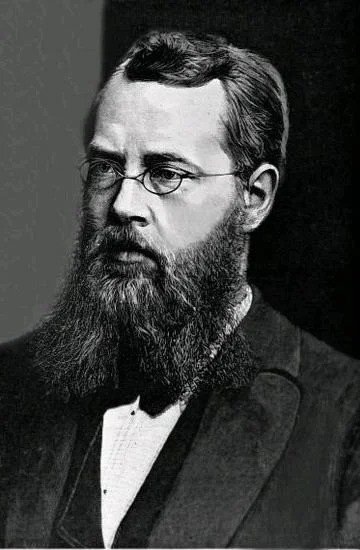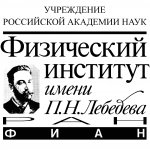Alexei Semikhatov. Photo source: Elena Librick / Scientific Russia
What is the correlation between mathematics and the physical world around us? It is, indeed, surprising how many times we’ve been able to find mathematical tools to get an acceptable description of the world — from gravitating objects and planets to the atomic model and the global structure of the Universe. Today, however, this simplicity seems to be coming to an end: all around us are complex physical systems that can hardly be approached with mathematics, says Alexei Semikhatov, a famous physicist and mathematician. The scientist discusses the mathematical view on the structure of our reality, the weirdness of the quantum world, and other themes in his interview with Scientific Russia.
Alexei M. Semikhatov, Dr. Sci. in Physics and Mathematics, Chief Researcher at the Theoretical Department, the Lebedev Physical Institute of the Russian Academy of Sciences (LPI RAS), science communicator, lecturer, and TV presenter.
― There is Sophus Lie’s theory in mathematics that refers to certain groups of symmetries, one of which has been materialized in our physical world. It turns out that what we see in particle accelerators was actually predicted by a mathematical theory and a section from a math textbook has materialized in nature at a fundamental level. Why is it so?
― We have no idea why. However, we do know that since the Modern Age the description of the world in science has been, in fact, a mathematical description. We have no answer to the question as to why it happened this way, but we are tremendously happy about this fact, as it allows us to make predictions. We prognosticate our world through manipulations with some mathematical objects and equations. And this state of affairs has existed since the time of Isaac Newton. Moreover, symmetries play a huge role in the structure of the world. Among other things, they can be complex and not reducible either to reflection or rotation in space. Such symmetries require the involvement of mathematical structures. We comprehend a huge number of phenomena thanks to understanding certain symmetries that govern these phenomena. And quarks that make up the nucleus of an atom are an excellent example. Mathematical considerations played an enormous role in predicting them.
― How’s that?
Unitary symmetry (from French “unitaire,” Latin “unitas” ― unity) is an approximate symmetry of strong (nuclear) interactions of elementary particles, reflecting the existence of common properties for groups of strongly interacting particles. This symmetry served as the basis for the systematics of elementary particles and ultimately led to the emergence of quantum chromodynamics and the prediction of quarks and gluons. Source: V. Savchenko, V. Smagin, “Fundamentals of Modern Natural Science: Thesaurus.” Rostov-on-Don. 2006. Image source: anusorn_nakdee / Freepik
― That’s an interesting story. At first, we believed there were just a few elementary particles that make up matter: an electron, proton, neutron, and neutrino. Then, we started building accelerators, and it turned out there were many more particles, not just dozens or a hundred, but many hundreds — a whole zoo! When physicists began to categorize particles into groups based on their similarities, they discovered groups that comprised 8, 15, 21 particles, and so on. Eventually, they came up with a series of numbers denoting the dimensions of these groups; particles discovered on accelerators fell into respective groups based on some symmetry features. Then it turned out that it was quite possible just to open a mathematics textbook that dealt with the properties of symmetry in a particular embodiment called Lie algebras, or Lie groups, and look up these dimensions there! Sophus Lie’s theory, which was already coined at the beginning of the 20th century, could tell us something definite about the numbers we received from the experiment. They fit into a certain series governed by the same basic symmetry (the basic transformation laws can manifest themselves by acting one way on a group of eight objects, another way on a group of 15, and so on). Then and there, it became clear that, for whatever reason, part of the world was governed by mathematical symmetry, which had the technical name of SU(3), or “unitary symmetry.” The most fundamental manifestation of this symmetry is when it governs a group of three objects. However, accelerators didn’t find any “group of three!” Researchers had to assume that, for some reason, we simply can’t see them.
― Are you talking about quarks?
― Yes, I am. But at the time in question, in the 1960s, researchers didn’t even know if quarks existed at all. We only had assumptions, behind which, however, was an amazing mathematical fact. The fact was that, based on how the mentioned SU(3) symmetry dealt with three fundamental objects, researchers could employ rather complex mathematical laws to find out how it dealt with groups of 8, 15, 21 components, and so on. This way, it turned out that all matter was, in a sense, composed of these three components. This whole host of particles, which were classified across SU(3) symmetries, comprised three hitherto unobserved particles! They were named quarks.
Marius Sophus Lie (1842–1899) is the founder of the theory of continuous groups and their applications in differential equations. Having arisen in connection with differential equations (each of them corresponds to a group of transformations in such a manner that, when applied to an equation, it does not change its form), the theory of Lie Groups united different branches of mathematics: differential equations, algebra, foundations of geometry, topology, and theoretical physics. Source: educational portal, Mathematics for Everyone. Image source: Ludwik Szaciński. Public domain, WikiMedia
― You mean we had managed to fit the element — quarks — into the physical picture of the world thanks to math textbooks before we actually detected them experimentally? How many years had passed since Lie theory until they realized one of Lie's lists contained the very missing building blocks of the universe?
― There are many more symmetries in mathematics besides SU(3), which we are now discussing. We have no idea why nature opted for this one. More than half a century had passed from the moment when Lie groups were formulated in mathematics, and until the moment when they came in handy to describe quarks. From then onward, the process sped up. Researchers began to look for these mysterious three particles, the never before observed quarks. They were found inside the well-known protons and neutrons: each proton and neutron was made up of three quarks. To a great surprise, it turned out that extracting these quarks from protons and neutrons was impossible. These objects exist in a rather peculiar sense: they exist inside other objects (such as a proton) that can’t be broken down into smaller particles. You can’t possibly pull one quark out from there; they are as if glued together. Normally, we are accustomed to the fact that anything can be taken apart, it’s just a matter of applying more energy, but this didn’t work here.
― There has always been this question of how long we will be taking matter apart and where the limit of this digging deeper is.
― In a sense, quarks are this limit. This is a rather elegant solution nature offers. After all, we have always had the concept of a Russian doll before our eyes: there is an atom, with a nucleus inside, with protons and neutrons inside the nucleus… and suddenly we found quarks that are inextricably linked with each other, and we deal with a completely different way of matter’s existence. We know for sure quarks are inside the proton, but we have no way to take a quark out. You see, nature invented such a peculiar way of existence of elementary entities.
― You say that we can’t take out quarks one at a time. Can we take them out combined?
― Quarks can only be taken out in certain combinations, which make up the particle zoo. An electric charge can serve here as the criterion. All particles around us (even if they are very short-lived) have an electric charge expressed as an integer if we take the charge of a proton as a unit of measurement. An integer charge is 0, ±1, and so on. But quarks have charges that are multiples of 1/3. So, “third parts” cannot travel across the Universe separately, but are, instead, organized in combinations with an integer total charge.
The word ‘quark’ comes from James Joyce’s “Finnegans Wake.” In his novel, seagulls shouted “Three quarks for Muster Mark!” In German, the word Quark means “cottage cheese” and “nonsense.” The American theoretical physicist Murray Gell-Mann proposed using the fancy word ‘quark’ to refer to new elementary particles. Image source: Yanina Khuzhina / Scientific Russia
― Back to Lie theory: have there been any attempts to verify the existence of other organizing symmetries in nature? To what extent is this phenomenon — the materialization of some mathematical models in the real world — versatile, and how far in the Universe can our earthly mathematics be applicable?
— Apparently, it has a very wide scope of application. Our understanding of the structure of the microcosm in its entirety is based, firstly, on the knowledge that symmetries exist and, secondly, on the understanding that there are some other, larger symmetries behind a bigger picture of the world’s structure, and they need to be looked for.
As such, the list of mathematical symmetries is absolutely infinite, but nature, for whatever reason, opted for just a few of them.
Symmetries are by definition built into the Standard Model of fundamental interaction, which form the basis of modern particle physics. Yet, we know for sure that it does not describe the entire world and that there are more particles beyond it. They are very hard to detect. We need supergiant accelerators for this. An expanded set of particles is almost certainly also governed by a group of symmetries, a larger one, a group that was known in the time of Sophus Lie. Several versions of the Grand Unified Theory based on different Lie groups have been proposed, but we lack experimental data to see which symmetries correspond to the observable world and which do not. According to modern concepts, fundamental nature is based on symmetries, some of which we have managed to spot, and some we have not.
The Standard Model of fundamental interactions is a theory that describes fundamental quantum fields, interactions between them, and quanta of these fields, i.e. elementary particles. The Standard Model covers weak, strong, and electromagnetic interactions (gravity is not included in the Standard Model due to the insignificance of its manifestations at the micro-level and the absence of a theory of quantum gravity). For the time being, it has been established that the Standard Model is incomplete: there must be still undiscovered elementary particles in nature (and the fields corresponding to them)
― Very fascinating! Getting off the topic a little, can we say that particles are, in a sense, smeared out in space-time?
― The word “particles” is misleading. What kind of particles?
― Say, an electron.
― An electron is elementary; it has neither the property of size nor the property of being a cloud or being smeared out anywhere. Electrons are governed by quantum mechanical laws of a rather abstract nature. Mathematics tells us that if we shine on an electron in an atom, bombard it with something, then we will find it once here, the next time there, and the third time perhaps closer to the nucleus. And if we collect large-scale statistics of such observations and superimpose all these pictures, then we will see a certain cloud and say, “we detect an electron here more often, and there less often.” But that doesn’t tell anything about where the electron is on its own. In fact, it is not at any particular point in space.
― A thing in itself.
― And to such an extent that an electron in a steady state in an atom has the property of having certain energy, but doesn’t have the property of occupying a position in space.
― Do you mean to say it is not present in space?
― Don’t even ask me where it is! It does not have the property of being at a certain point in space, this property is irrelevant to it if it has certain energy in an atom. By the way, an electron can’t look like a marble, as it is often depicted, or like a cloud, for example. In fact, it doesn’t have any appearance at all. At the same time, an electron can absorb and emit light, thanks to which we get a lot of useful information. But we have no way to “stick a finger in an electron,” to see it with our eyes.
We can judge about an electron only by indirect evidence, and the interior of an atom is fundamentally invisible to us in any conventional sense.
― That’s a kind of Plato’s allegory of a cave.
― In fact, it is even more than Plato’s cave. Plato’s idea is that mathematics exists somewhere and reflects itself into the physical world, and then, the entire physical world is, in a sense, a shadow of this mathematics. The idea is not obvious, but it can be discussed precisely because our world, for some incomprehensible reason, is mathematical. Now, back to elementary particles, these are actually not particles, they are not like marbles or snooker balls, but lists of properties. What do we know about an electron? It has a certain mass, an electric charge, and a few other properties. That’s all. We know nothing more about an electron.
An electron has no age, no size, it can’t be labeled in any way that distinguishes it from another electron, and this fact, by the way, has lots of consequences. Figuratively speaking, an electron defies labeling with any highlighter.
Proton lifetime has to be greater than 1030 years. The lifetime of the Universe is about 1.4 × 1010 (14 billion) years.
― Are electrons the only ones to be so weird? For instance, a proton has no age, either. Or is it supposed to exist forever?
― In a sense, you can say a proton has the right side and the left side because it consists of quarks, but it still doesn’t look like a marble, not “even a tiny little marble.” Two protons, like two electrons, are indistinguishable, they can’t be labeled either. The point is that two quantum particles of the same class are fundamentally indistinguishable. Protons have no age, just like electrons. The “age” column is simply not provided in the list of its properties.
Basically speaking, we are used to thinking some properties are always inherent in things, but elementary entities, elementary particles, exist without such properties.
― You have mentioned the mass of particles, and it also seems to be something relative. By themselves, particles have no mass, but acquire it through interaction with the Higgs field. So, if they did not interact with this field, their mass would be equal to zero, like that of a photon, and our entire world would then consist, in a sense, exclusively of light, of photons. Is it correct?
― Well, it is and it is not. First, let’s discuss what is correct. Now we can observe in nature, among other things, massless photons and their massive “counterparts” Z bosons. Both photons and Z bosons had been massless particles dashing through the Universe at the speed of light until the moment the Higgs field began to give mass to particles. Then an event called Spontaneous Symmetry Breaking happened and the Z boson became massive due to interaction with the Higgs field (and became the carrier of the weak force), while the photon remained massless (and carries the electromagnetic force). This is exactly how we interpret the unification of electromagnetic and weak forces: a certain event occurred, due to which some particles remained massless, while others became massive. Interaction with the Higgs field led to symmetry breaking and the emergence of massive particles.
Now, what is incorrect. In fact, only a fraction of the mass we are dealing with is due to the interaction with the Higgs field: for example, the field’s contribution to the mass of quarks is less than one percent. The mass of a quark mainly comes from the energy of that quark’s interaction with other quarks ― say, in a proton ― as well as with itself. Elementary particles are not the last word in the search for the building blocks of matter; for the time being, these are quantum fields instead.
Elementary particles are their excitations, ways these fields’ energy is organized. The fields interact with each other, which in some cases can be described as the emission and absorption of some particles by others. Then one can think of a quark as if it is surrounded by gluons, the carriers of the strong nuclear force. So, it is the energy of these gluons that makes up almost the entire mass of a quark.
The correlation between material objects manifests itself through their interaction with each other. We do not observe a universal type of interaction, but we know four types of fundamental interactions carried out with the help of the corresponding fields. These are gravitational, electromagnetic, strong, and weak interactions. Acting at different levels, they organize and structure elements of the world that are composed of leptons and quarks (such as electrons and neutrinos around us, as well as u and d quarks assembled into protons and neutrons). The hypothetical unification of all four interactions into something unified is sometimes called the Theory of Everything. Image source: vector_corp / Freepik
― Thinking of the three quantum fields that carry fundamental interactions (strong, weak, and electromagnetic), they are also, in a sense, not what they seem to be. If we had incredibly high temperatures, we could merge them into one single fundamental field. So, it’s only about our inability to reach it.
― Raising the temperature that high means getting what either happened in the very early Universe or, to some extent, happens in accelerators at the moment when protons collide and form some kind of a single entity. Sadly, even the temperature that we get at the most powerful accelerators is not enough to make the electroweak and strong interactions merge into one. Your question, in fact, is a continuation of the story that the symmetry in our world is broken, that in the very early and hot Universe (the first fractions of a second after the Big Bang) this symmetry was not yet broken, and a certain unified paradigm governed the world’s structure. Then, as the Universe cooled down, there was no longer enough energy to produce heavy particles, and the unified symmetry scheme broke into several pieces. We observe these pieces today in the form of fundamental interactions: electromagnetic, strong, and weak. The gravitational one stands apart and its correlation with this scheme is obscure.
By the way, it is a great success that we have the theory of the electroweak interaction, which combines the electromagnetic and weak force into one. We don’t know how all fields merge together and what symmetry was responsible for this in the very early Universe. Let’s say it’s because we are unable to raise the temperature that high. But here we are talking about temperatures of an enormous magnitude. This happened just once in history, almost immediately after the birth of our Universe.
As to quantum fields that carry interactions, we should also mention that we can deal with them mathematically when the interactions are not too intense. Say, the interaction of two electrons can be well described as an exchange of a photon (this is not exactly the photon that our eyes or cameras can capture, but the so-called virtual photon, however, let’s not focus on the differences now). One electron emits and the other absorbs a photon, and, in this way, they “kick” each other. A more accurate picture of the interaction of two electrons will be obtained if we take into account the possibility of exchanging two photons, and then three photons, and so on. Subsequent refinements turn out to be increasingly smaller, we achieve unprecedented scientific accuracy in the reconciliation between theory and experiments. However, the scheme that implies a consistent record of the exchange of particles (quanta of the carrier field) does not always work. Intense field interactions can be more complex.
This, once again, reminds us that the world is based on quantum fields, whereas individual elementary particles are their manifestations, very common, but not the only ones.
― You say that the capacity of our accelerators is no longer enough to discover new physics, new particles. What about theory? Are we at an impasse here too?
― I would not use the word “impasse,” although, in the case of accelerators, that’s exactly what we have encountered. Researchers are really unable to keep up with nature by getting more and more massive particles in accelerators. This means that we may never know the mysterious symmetry that generalizes the symmetry of the Standard Model. Technically, we can’t reconstruct it in accelerators. This is on the one hand. On the other hand, we also have that quark issue. We understand quite well how they behave when they are very close to each other within a proton ― this is the scheme that I have just described: the interaction pattern is made up of exchanges of individual gluons. We have enough math tools to describe what is happening, and it is well confirmed by experiments. But we run into huge math difficulties when trying to describe exactly how the interaction keeps individual quarks confined within a proton. This example, along with a number of similar ones, probably suggests that we have studied the simple stuff entirely and run into very complex systems that we do not really know how to deal with mathematically. We can say that the simplicity has come to an end. When a quark tries to break through the proton confinement pushed by the energy transferred to it, a huge number of degrees of freedom are activated in the gluon field and the quark fields. Numerous particles are born and absorbed, and an intense exchange of energy occurs. We have no mathematical tools to describe it.
This problem of mathematical derivation of the confinement of quarks inside a proton is estimated at a million dollars, but by solving it, you will earn much more just by delivering lectures around the world. The fundamental rules of the game within quantum field theory seem to be known, but there are no methods to stretch the thread from the basic provisions to confining quarks within protons and neutrons.
― We wish we could solve this enigma someday. Now in the end, please tell us about your book Everything That Moves. Strolling Through the Restless Universe, which will soon be published by Alpina Non-Fiction. What interesting things do we find there?
― The book deals with many issues that we discussed today, and the message is that contemporary knowledge is the result of the development of science since the Modern Age and that we cognize the world through the changes taking place in it as we observe and engage with everything that moves. Planets move in the sky, and the laws of planetary motion were revealed to us by Johannes Kepler. Then, Newton mathematically derived Kepler orbits from more fundamental assumptions. Today, we measure the spin of an electron by the direction, in which it is deflected when flying through a non-uniform magnetic field. We learned about the existence of the atomic nucleus using moving alpha particles. It is from irregularities in the movement of Uranus that we learned about the existence of Neptune, and now we predict the existence of Planet Nine in the solar system due to the peculiar correlations in the way a group of trans-Neptunian objects moves. The whole story about dark matter is an attempt to find a reason for the observed movement of stars in galaxies and the movement of galaxies in clusters. The unceasing movement within the things that surround us has its manifestations such as temperature and entropy, and the properties of things are largely determined by the nature of this movement.
My book is a walk through the modern scientific picture of the world with an idea of movement as a guide. After all, everything in nature moves!
The book largely focuses on the two pillars that underlie our fundamental knowledge of the world: the theory of general relativity and quantum theory. The former is about how the cosmos works on a large scale. It’s a realm where gravity rules and where mathematics takes us away from the space we live in into curved space-time, where we deal with entities that are not directly observable but allow us to make predictions that come true: from black holes and gravitational waves to, perhaps, the fate of the Universe. Quantum theory is even more striking. In it, many familiar concepts (for better or for worse?) lose themselves even further in mathematical abstractions. We have advanced a lot by climbing up the ladder of abstractions that, surprisingly enough, once again allow us to make predictions that come true, but we have a hard time answering questions about how exactly these mathematical objects relate to the physical world. To crown it all, the two pillars — quantum theory and general relativity — do not reconcile. We have two halves of the world in each hand and do not know how to mate them. The book, however, tries to be constructive. For example, it discusses whether Maxwell’s demon, which is very science savvy, can still resist the entropy increase. That is, it discusses how a certain kind of “enmity” between quantities in quantum mechanics ensures the relative regularity of the world and makes our existence possible as well as how far the known laws of nature allow us to get into the depths of space or prevent us from reaching them.
The interview was conducted with the support of the Ministry of Science and Higher Education of the Russian Federation and RAS.






































